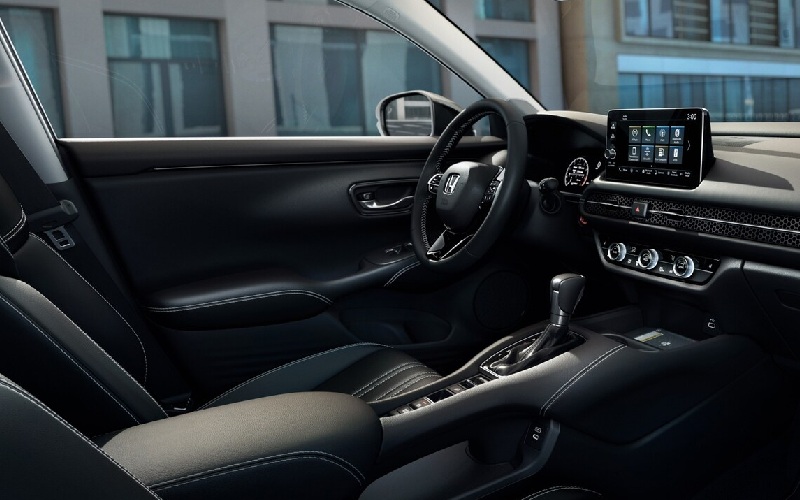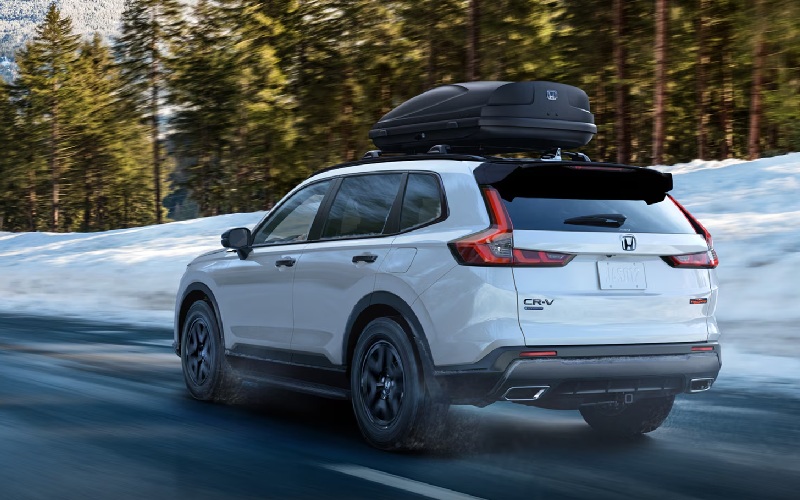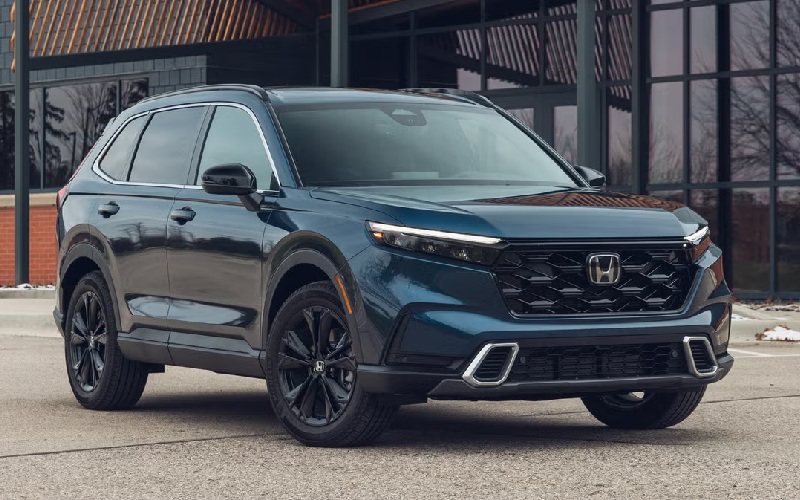The Honda Pilot represents the culmination of a safety engineering philosophy, incorporating a multifaceted approach that combines structural integrity, passive protection systems, and sophisticated active safety technologies. As the Honda flagship three-row SUV, the Pilot showcases the brand’s most advanced safety features, providing comprehensive protection for families while navigating diverse Canadian driving conditions.

Structural Safety: The Foundation of Protection
Advanced Compatibility Engineering (ACE) Body Structure
At the core of the Pilot safety credentials is the Honda Advanced Compatibility Engineering (ACE) body structure, now in its second generation. This proprietary architectural approach creates a network of front frame structures designed to:
- Distribute crash energy more evenly throughout the front of the vehicle
- Redirect impact forces away from the passenger compartment
- Improve compatibility with vehicles of different sizes and heights
- Minimize cabin intrusion during frontal collisions
The ACE structure incorporates multiple load paths that channel crash energy through the frame rather than into the occupant compartment. High-strength steel comprises approximately 60% of the Pilot body structure, with ultra-high-strength steel (980 MPa or higher) strategically placed in critical areas like the A-pillars, roof rails, and door sills.
This sophisticated structural design helps the Pilot maintain its integrity during impacts from various angles, which is particularly important for an SUV with a higher center of gravity than passenger cars.
Impact-Absorbing Crumple Zones
Complementing the ACE structure are precisely engineered crumple zones that manage impact energy through controlled deformation:
- Front crumple zones extend approximately 500 mm from the front bumper
- Rear crumple zones absorb energy during rear-end collisions
- Side impact protection includes reinforced door beams and energy-absorbing door panels
These zones absorb collision forces progressively, decelerating the vehicle at a rate that minimizes forces transmitted to occupants.
Passive Safety Systems: Complete Occupant Protection
Advanced Airbag System
The Honda Pilot features an extensive airbag network with eight standard airbags:
- Driver and front passenger dual-stage, multiple-threshold front airbags
- Driver and front passenger knee airbags
- Front side airbags with passenger-side Occupant Position Detection System (OPDS)
- Three-row side curtain airbags with rollover sensor
The front airbags employ advanced deployment technology that adjusts inflation based on crash severity, seat belt usage, and occupant position. The side curtain airbags extend approximately 600 mm downward from the roofline, covering all three rows of seating and providing protection during side impacts and rollover events.
Seat Belt Technology
Every seating position in the Honda Pilot includes three-point seat belts with the following features:
- Front row: Pretensioners and load limiters that tighten belts within milliseconds of a collision while managing chest forces
- Second row: Lower Anchors and Tethers for Children (LATCH) system with three complete sets of child seat mounting points
- All positions: Emergency Locking Retractors (ELR) that lock belt movement during sudden deceleration
Front seat belts also incorporate automatic tensioning systems that maintain proper belt tension during normal driving while allowing comfortable movement.
Whiplash Mitigation Design
The front seats feature active head restraints designed to reduce neck injuries during rear-end collisions:
- Head restraints positioned approximately 50 mm from the occupant’s head during normal seating
- Mechanical linkage system that moves the head restraint upward and forward during rear impacts
- Seat frames engineered to absorb energy during rear collisions
This integrated approach reduces whiplash injury severity by approximately 30% compared to conventional seat designs.
Honda Sensing: Comprehensive Active Safety Suite
Every Pilot comes standard with Honda Sensing, the manufacturer’s comprehensive active safety and driver-assistive technology suite. The latest generation of this system employs a combination of millimeter-wave radar and a wide-angle, high-definition camera mounted near the rearview mirror to detect and respond to potential hazards.
Collision Mitigation Braking System (CMBS)
The CMBS functions as the last line of defense against frontal collisions:
- Operation range: 5-180 km/h
- Detection range: Up to 150 meters ahead
- Braking force: Up to 0.8 g deceleration capability
- Three-stage alert system: Visual, audible, and tactile warnings
The system can identify vehicles, pedestrians, cyclists, and motorcycles, with the ability to apply appropriate braking force to reduce collision severity or avoid impacts entirely. The 2025 update improves intersection recognition, allowing the system to detect crossing traffic at junctions.
Road Departure Mitigation (RDM)
This system helps prevent unintended roadway departures through:
- Lane marker recognition at speeds above 72 km/h
- Shoulder and road edge detection capability
- Steering torque application of up to 3.0 Nm to correct vehicle heading
- Selective braking application to individual wheels when necessary
When the system detects the vehicle crossing detected lane markings without signalling, it provides a series of alerts and can actively assist in steering the vehicle back into the lane.
Lane Keeping Assist System (LKAS)
Working in tandem with RDM, the LKAS provides continuous lane centering assistance:
- Operational speed range: 72-180 km/h
- Camera-based detection of lane markings
- Continuous steering torque application up to 3.0 Nm
- Driver override capability through minimal steering input
Unlike earlier lane-keeping systems that operated only when drifting toward lane markings, the Pilot LKAS actively works to maintain center lane position during normal driving, reducing driver fatigue during long highway journeys.
Adaptive Cruise Control (ACC) with Low-Speed Follow
The Pilot ACC system manages both speed and following distance:
- Operational range: 0-180 km/h
- Four selectable following distance settings (approximately 30, 40, 50, and 60 meters at 100 km/h)
- Full-stop capability in traffic
- Smooth resumption of travel when traffic flow resumes
The model features enhanced acceleration mapping, providing more natural acceleration when vehicles ahead change lanes or exit the roadway.
Traffic Jam Assist
Building on ACC capabilities, Traffic Jam Assist provides additional support during congested driving:
- Low-speed (under 30 km/h) lane centering with reduced driver steering input requirements
- Enhanced stop-and-go functionality with natural timing
- Visual confirmation of system status through instrument panel indicators
This feature is particularly valuable for urban Canadian commuters in high-traffic areas like the Greater Toronto Area, Metro Vancouver, or Montreal.
Traffic Sign Recognition (TSR)
Using the forward-facing camera, TSR identifies road signs and displays them on the instrument panel:
- Recognition capability: Speed limits, stop signs, no-entry signs, and other critical notifications
- Display location: Driver information interface or head-up display (when equipped)
- Speed limit notification: Visual alert when exceeding posted limit
The system can recognize and interpret standard Canadian traffic signs, including bilingual English/French signage in Quebec and other regions.
Advanced Safety Technologies
Blind Spot Information System (BSI)
The Pilot BSI monitors areas that may be obscured in side mirrors:
- Radar sensors mounted in rear bumper corners
- Detection range: Approximately 3 meters alongside and 10 meters behind the vehicle
- Visual alerts in side mirrors when vehicles are detected
- Additional steering wheel vibration if turn signal is activated while a vehicle is detected
This system is particularly valuable when changing lanes on multi-lane highways, helping drivers avoid potential sideswipe collisions.
Rear Cross Traffic Monitor
Complementing BSI when backing up, this system:
- Uses the same radar sensors as BSI
- Detection range: Up to 25 meters from either side
- Provides visual and audible alerts when cross traffic is detected
- Operates automatically when reverse gear is selected
The system is especially helpful when backing out of parking spaces with limited visibility, such as in busy shopping center parking lots.
Multi-Angle Rearview Camera
Standard across all trims, this system provides:
- 180-degree wide-view perspective
- Normal view (approximately 130 degrees)
- Top-down view for precise parking
- Dynamic guidelines that curve with steering input
- Distance markers at 0.5, 1.0, 2.0, and 3.0 meters
Higher trim levels include a washer system that cleans the camera lens when the rear window washer is activated.
Parking Sensors
Available on higher trims, the parking sensor system includes:
- Four front sensors with detection range up to 1.2 meters
- Four rear sensors with similar detection range
- Progressive audible alerts that increase in frequency as obstacles get closer
- Visual indicators in the central display showing distance and direction to obstacles
Low-Speed Braking Control
This system provides additional coverage for close obstacles:
- Operational at speeds below 10 km/h
- Detection range: Up to 4 meters in front, 1.8 meters behind
- Automatic brake application if collision is imminent
- Particularly valuable for parking scenarios and low-speed maneuvering
Child Safety Enhancements
Rear Seat Reminder
Standard on all Honda Pilot models, this system:
- Activates when a rear door is opened and closed before driving
- Provides a visual reminder in the instrument panel when the vehicle is turned off
- Issues multiple audible alerts to check the rear seats
- Can be temporarily or permanently disabled through the vehicle settings menu
This technology helps prevent the tragic consequences of leaving children or pets unattended in vehicles.
Child-Proof Rear Door Locks
Mechanical child-proof door locks prevent rear doors from being opened from the inside when activated, ensuring young passengers cannot accidentally open doors while the vehicle is in motion.
Advanced Driver Monitoring
Driver Attention Monitor
This system evaluates steering inputs to detect signs of driver fatigue or inattention:
- Monitors steering pattern changes that might indicate drowsiness
- Provides progressive alerts from gentle reminders to more urgent warnings
- Suggests breaks when signs of fatigue are detected
- Operational at speeds above 40 km/h
The system displays a coffee cup icon in the instrument panel and a rest recommendation when it detects potential fatigue.
Canadian Weather-Specific Safety Features
Several safety features specifically address challenging Canadian weather conditions:
Winter Driving Enhancements
- Heated side mirrors that clear snow and ice buildup (standard across all trims)
- Windshield wiper de-icer on higher trims that prevents ice accumulation at the base of the windshield
- Heated steering wheel that allows drivers to maintain glove-free control in cold conditions
- Vehicle Stability Assist calibrated for snow and ice conditions
- Available Snow mode that adjusts throttle response, transmission behaviour, and AWD torque distribution
Visibility Enhancements
- Rain-sensing wipers that automatically adjust speed based on precipitation intensity
- LED headlights with Auto-On/Off function that activates in low light conditions
- LED fog lights on higher trims that improve visibility in adverse weather
- Acoustic windshield that reduces wind noise while improving wiper performance
2025 Honda Pilot: Complete Safety Integration
The Honda Pilot exemplifies a holistic approach to vehicle safety, integrating structural engineering, passive protection systems, and advanced active safety technologies. Rather than relying on any single safety feature, Honda has developed a comprehensive safety ecosystem where multiple systems work together to prevent accidents and protect occupants when unavoidable.
This multilayered approach addresses the full spectrum of safety concerns—from everyday distracted driving risks to severe collision protection—making the Pilot a standout choice for safety-conscious consumers, particularly families. As vehicle safety technology evolves, the Pilot demonstrates how thoughtful integration of various systems can create a safety profile greater than the sum of its components.
For Canadian drivers facing diverse and often challenging driving conditions, the Pilot comprehensive safety package provides valuable protection and peace of mind across all seasons and driving scenarios.




